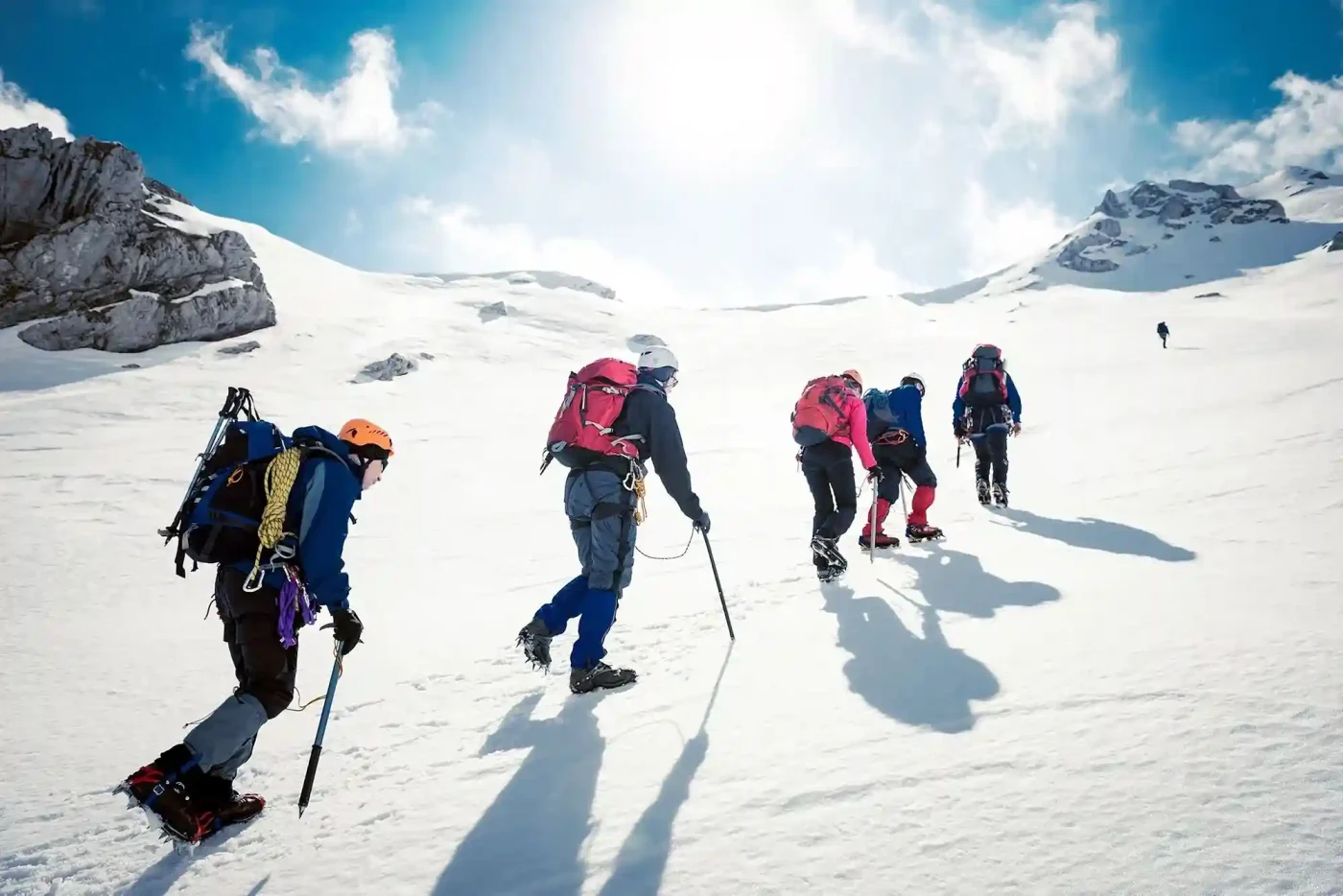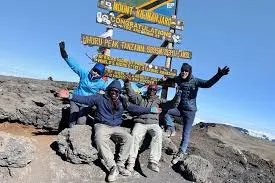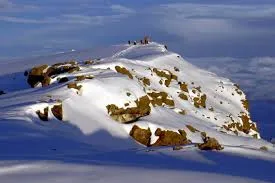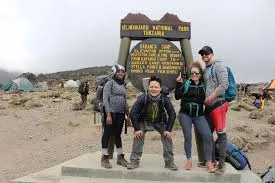Safety Tips for Solo Climbers on Kilimanjaro
Climbing Kilimanjaro solo requires extra awareness and preparation to stay safe. Always register with an experienced trekking company and climb with licensed guides who know the mountain well. Stay on marked routes, avoid hiking after dark, and keep your valuables secure at all times. Communicate your health concerns with your guide, monitor for altitude sickness symptoms, and never push beyond your limits. Below is a comprehensive safety guide tailored for solo climbers to ensure a secure and successful Kilimanjaro trek with Capable Africa Tours.
Plan Your Safe Solo Climb Now
Why Safety Matters for Solo Climbers on Kilimanjaro
Solo climbing Kilimanjaro doesn’t mean trekking alone—Kilimanjaro National Park mandates guided treks. With Capable Africa Tours, solo climbers join small groups with expert guides, ensuring safety while maintaining the solo adventure vibe. The 5,895-meter climb crosses five climate zones, with risks like altitude sickness, extreme weather, and rugged terrain. Proper preparation, gear, and knowledge reduce these risks, boosting your summit success rate to 85–90% on routes like Lemosho or Machame. Here’s how to stay safe.
Key Safety Highlights for Solo Climbers
- Guided Groups: Join 1 guide per 2 trekkers and 3–4 porters per person for support.
- Acclimatization: Choose 7–8 day routes for gradual ascent, reducing altitude sickness risk.
- Health Monitoring: Daily pulse oximeter checks by Capable Africa Tours to track oxygen levels.
- Emergency Preparedness: Oxygen tanks, first aid kits, and evacuation plans included.
- Gear Quality: Rent high-quality gear from Capable Africa Tours to stay warm and dry.
Preparation Tips for Solo Climbers
Preparation is the foundation of a safe Kilimanjaro climb. Solo climbers need physical fitness, mental resilience, and logistical planning. Capable Africa Tours provides pre-trek training plans and gear advice to ensure you’re ready for the 70 km journey across diverse terrains.
Physical and Mental Training
- Cardio Endurance: Run, cycle, or swim 4–5 times weekly (45–60 min) to build stamina for 6–8 hour hiking days.
- Strength Training: Focus on squats, lunges, and core workouts to handle steep inclines and rocky paths.
- Practice Hikes: Train with a 5–7 kg daypack on hilly trails to mimic Kilimanjaro conditions.
- Altitude Training: If possible, hike above 2,500 m or use altitude simulation gear to prepare for 5,895 m.
- Mental Prep: Practice mindfulness or visualization to stay calm during the challenging summit night.
Logistical Planning
- Choose a Reputable Operator: Capable Africa Tours offers all-inclusive packages with safety-first protocols.
- Travel Insurance: Get coverage for high-altitude trekking and emergency evacuation.
- Health Check: Consult a doctor for a fitness assessment and discuss altitude medication like Diamox.
- Visa and Permits: Ensure your Tanzanian visa and Kilimanjaro park permits are arranged in advance.
Preparation Stats
| Metric | Value |
|---|---|
| Recommended Training Duration | 3–6 months |
| Daily Hiking Time | 6–8 hours |
| Elevation Gain | 3,795 m / 12,451 ft |
| Summit Success Rate | 85–90% (8-day routes) |
| Minimum Fitness Level | Moderate (10–12 km hikes) |
Watch Solo Climbing Safety in Action
See how Capable Africa Tours ensures solo climber safety on Kilimanjaro with expert guides, health monitoring, and top-notch gear in this video.
Essential Gear for Solo Climbers
Quality gear is critical for solo climbers to stay safe in Kilimanjaro’s varied climates, from rainforest humidity to arctic summit conditions. Capable Africa Tours provides porters to carry up to 15 kg, leaving you with a 5–7 kg daypack. Renting gear from us saves luggage space and ensures reliability.
Packing Checklist
- Base Layers (3–4 sets): Merino wool or synthetic (200g) for moisture-wicking (40–80°F).
- Mid-Layers (2): Fleece or softshell jackets (300–400g) for insulation (20–60°F).
- Outer Layers (1–2): Gore-Tex jacket and pants for rain and wind protection (0–40°F).
- Thermal Gear: 800-fill down jacket and thermal underwear for summit night (-15°C).
- Footwear: Waterproof, mid/high-ankle hiking boots, 3–4 pairs merino wool socks, gaiters.
- Accessories: Wide-brimmed hat, UV400 sunglasses, SPF 50+ sunscreen, neck gaiter, gloves (inner and waterproof outer).
- Safety Essentials: 3L water bladder, trekking poles, headlamp with extra batteries, first aid kit, satellite phone or radio.
- Camping Gear: Sleeping bag (-15°C), sleeping pad, 30–40L daypack, compression sacks.
Gear Rental with Capable Africa Tours
Rent sanitized, high-quality gear like sleeping bags, down jackets, and trekking poles from Capable Africa Tours. Contact us to customize your gear package.
Health and Altitude Safety for Solo Climbers
Altitude sickness is a top concern on Kilimanjaro, with 50% of climbers experiencing mild symptoms above 3,000 m. Capable Africa Tours mitigates risks with daily health checks, gradual ascents, and emergency oxygen. Solo climbers must monitor their health closely and communicate with guides.
Preventing Altitude Sickness
- Choose Long Routes: Opt for 7–8 day routes like Lemosho for better acclimatization.
- Hydrate: Drink 3–4 liters of water daily to stay hydrated and aid oxygen absorption.
- Medicate: Consult a doctor about Diamox (125–250 mg daily) to prevent altitude sickness.
- Monitor Symptoms: Report headaches, nausea, or dizziness to your guide immediately.
- Pace Yourself: Follow the “pole pole” (slowly) mantra to avoid overexertion.
Health Monitoring Stats
| Metric | Value |
|---|---|
| Altitude Sickness Incidence | 50% (mild symptoms above 3,000 m) |
| Daily Water Intake | 3–4 liters |
| Oxygen Saturation Check | Twice daily (pulse oximeter) |
| Emergency Oxygen Tanks | 1 per group |
| Evacuation Time to Base | 4–6 hours (from high camps) |
Emergency Protocols for Solo Climbers
Emergencies on Kilimanjaro are rare but require preparedness. Capable Africa Tours equips groups with oxygen tanks, first aid kits, and communication devices. Solo climbers should know evacuation routes and stay with their guide at all times.
Emergency Action Plan
- Stay with Your Guide: Never separate from your group or guide, as solo navigation is prohibited.
- Communication: Carry a charged satellite phone or radio for emergencies (cell signal is unreliable above 3,000 m).
- First Aid: Carry a personal first aid kit with bandages, painkillers, and antiseptic wipes.
- Evacuation: Follow your guide’s instructions for rapid descent to lower altitudes if needed.
- Insurance: Ensure your travel insurance covers helicopter evacuation for severe cases.
Best Routes and Timing for Solo Climbers
Choosing the right route and season enhances safety. Capable Africa Tours recommends longer routes like Lemosho or Machame for solo climbers, as they offer better acclimatization and higher summit success rates. Dry seasons (January–March, June–October) provide safer trails and clearer views.
Recommended Routes
| Route | Duration | Distance | Success Rate | Pros |
|---|---|---|---|---|
| Lemosho | 7–8 days | 70 km | 85–90% | Scenic, less crowded, great acclimatization |
| Machame | 6–7 days | 62 km | 80–85% | Popular, diverse landscapes, good acclimatization |
| Rongai | 6–7 days | 73 km | 80–85% | Remote, drier northern approach |
Seasonal Safety Tips
- Dry Seasons (Jan–Mar, Jun–Oct): Clear trails, stable weather, ideal for safe trekking.
- Wet Seasons (Apr–May, Nov): Avoid due to muddy trails, poor visibility, and higher risks.
- Shoulder Seasons (Dec, early Jun): Moderate weather, fewer crowds, but pack extra rain gear.
Climb Kilimanjaro Safely with Capable Africa Tours
Ready for a safe and unforgettable solo climb? Capable Africa Tours offers expert-guided treks, daily health checks, and high-quality gear rentals to ensure your Kilimanjaro adventure is secure and successful. Book now to join a group and conquer Uhuru Peak!
- 85–90% summit success rate with longer routes
- Experienced guides (1 per 2 trekkers) and porters
- Daily health monitoring with pulse oximeters
- Eco-friendly treks supporting local communities
- All-inclusive packages with meals and transfers
Limited spots for safe Kilimanjaro treks—book your solo adventure today!
Plan Your Trek Now


